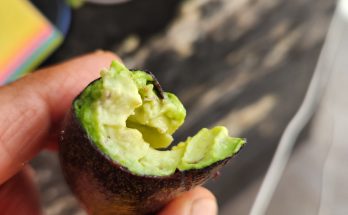By Martín López
For some time, I have wanted to experience the bees, to know a little more about how they create their elixir of the gods, how they design their community, how they reproduce asexually, how they “alchemize” the energy of the flowers to turn it into liquid gold.
The ancient Mayas used honey as a medicine of power, to harmonize the hearts. I think that was the real gold, not the one the conquerors sought.
I have no doubt that bees answered my call and took me to a ranch outside Dolores Hidalgo with Ireti García Arias, a beekeeper who learned from her father. His name is Salvador García, “Chava,” who’s been cultivating this tradition for more than 40 years.
We arrive at Chava’s ranch, home to 24 million bees distributed in 300 hives. They produce one of the best mesquite honeys I have tasted in this life, as well as many other flower flavors.
Chava tells me that at the age of 17, he went to the United States, like many Mexicans, to seek a livelihood and a better future. He could neither read nor write. He bought a plow and a wheelbarrow and began to make a living. At 22, he married, returned to Mexico and, with a group of 10 people, got a loan of 7,770 pesos to start producing with his first 10 beehives.
Soon after, he fell in love with bees and decided to enter fully into the life of a beekeeper. But he realized that if he only dedicated himself to the extraction of honey, he wouldn’t be satisfied, so he also decided to save the world. Understanding the importance of this peculiar insect in the balance of the planet, he decided that together with his daughter, to give talks and share his teachings.
They led by example, stressing that conscious beekeeping, which rescues and preserves bees, can help regenerate the earth. In addition, they show vegetable growers that having many healthy bees can increase their yields by 50%. He learned this in some fields in the United States.
As we walk through his fields, he explains to me that he has been planting mesquite, agave, and other endemic plants for years for the preservation of the place. He tells me that mesquite is good for water retention, because its roots are very strong and deep, as they manage to penetrate the rocks. Therefore, they keep the soil moist longer when it rains.
UNAM, the Autonomous National University of Mexico, reported there were 1.6 billion bees in Mexico in 2019 and that 75% of the food we eat depends on their pollination. Without bees, there would simply be no life.
Mexico is sixth in the world in honey production and quality, but, for this same reason, the threat to bees is greater. Due to industrial production, enormous wear and deterioration of habitats puts various species in danger of extinction. They are also threatened by monoculture agricultural practices and the use of pesticides.
I am very sad to see how the lands of other ejidatarios are, as Chava tells me that it rains less and less. He shows me the mountains of his neighbors, more bare and more arid as they exploit them, because there are people who are only interested in money without considering the necessary regeneration of the soil. In the end, they will lose, because, when the countryside can no longer provide them with food, they won’t be able to eat the money. Another terrible threat is the proposed open-pit mine about to be built not far from away.
After the tour, it’s time to put on for the first time that kind of spacesuit so characteristic of the profession. Ireti explains all the precautionary measures before entering and what to do if some insistent bee manages to sneak behind the mesh. Chava lights some wood to light the smoker. She says the smoke usually calms them down. And we are interrupting their work when we visit with them.
We head to the hives. I feel weird, really like an astronaut in an uncomfortable suit. I’ve heard that some beekeepers go in without wearing a protective suit. Could it be they can communicate with the bees through energy and vibration? I think so, but, just in case, in my first encounter with them, I didn’t even try, because if you get stung by a few bees, they send you to another dimension.
Everything was going well, until I realized that, with my gloves on, I couldn’t take pictures and videos with my cell phone. “Someone’s finger should be cut off,” I thought. But no, that seems a bit extreme. So I look for a skin that nature can offer me to simulate a finger and document a taste of this incredible experience.
There are millions of worker bees and drones working non-stop, guided by a queen in each hive. There is a uniform buzzing; I smell flowers, wood, wax, while Chava and Ireti explain to me how they extract the honey and wax. They tell me that only twice a year, in spring and autumn, everything blooms.
It’s a beautiful sight to watch them flirt with the flowers, which are like a magnet to them. Ireti tells me that to pollinate, it’s enough for the bees to pass near the flowers for a few seconds.
Then we enter a cellar, a place where the panels are brought and machines separate the honey from the rest. So, month by month, they pour tons of honey into barrels then bottle it in jars of different sizes, label them, and take them to town for sale.
Ireti, with her Luna de Miel brand, works with different products such as mesquite honey, summer multiflower, garabatillo and cocoa. They also produce food supplements with propolis, pollen, and royal jelly. Also candles, soaps, shampoo, and waxed cloths to wrap any organic matter that goes in the fridge.
As the good Rudolf Steiner says, “Life is about human interest in bees, for our life rests upon them.”
At the end of the experience, I confirmed that my hosts sweetened my heart more and filled my home with several gift honeys. Thank you, Ireti and Chava, for this good trip!
By the way, you can get Luna de Miel products in several stores or consult with Ireti at 415 181 1931.




